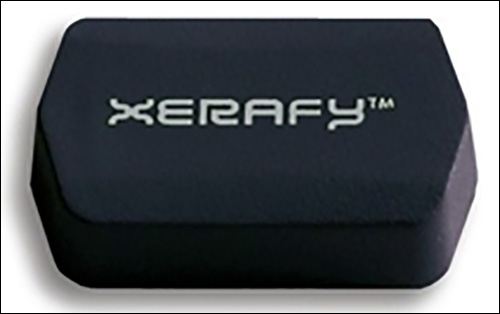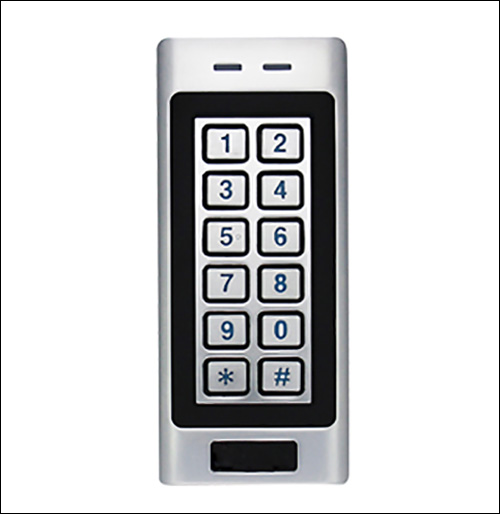Presented here are news announcements made during the past week by the following organizations:
Xerafy;
iDTRONIC;
PREMO;
Sigfox; and
the Georgia Institute of Technology.
Xerafy Unveils RFID Tag for Complex Production Environments
Xerafy has announced that its Pico Plus Series UHF RFID tag is sized to fit on small metallic assets, such as blade servers, and to offer what it claims is a competitive read range performance compared to tags twice its size. The IP68-rated PicoX II Plus can be attached to weapons, tools and medical devices, the company reports. The rugged tag offers up to a 10-foot read range and a durable form factor. It utilizes a specially engineered polymer and is designed for industrial applications for which critical and potentially hazardous situations require the reliable identification of assets.

The tag utilizes the EPCglobal UHF Class 1 Gen 2 (ISO 18000-6C) air-interface protocol. Its operating frequencies are 902 to 928 MHz (FCC) and 866 to 868 MHz (ETSI). The IC type is Alien Technology’s Higgs 3 chip. The tag’s memory includes 96 bits of Electronic Product Code (EPC) memory, 512 bits of user memory and 64 bits of tag ID (TID) memory, with EPC memory content comprising a unique, randomized number. The maximum reading distance is up to 3 meters (10 feet).
The tag can be applied to metallic surface materials, comes in a hard tag form factor, is composed of engineering-grade nylon polymer and can be attached via a high-performance adhesive. Its dimensions are 17.7 millimeters by 10.9 millimeters by 5 millimeters (0.70 inch by 0.43 inch by 0.20 inch), and its weight is 2 grams (0.07 ounce). The tag’s operating temperature is -30 degrees to +85 degrees Celsius (-22 degrees to +185 degrees Fahrenheit).
iDTRONIC Intros RFID Reader for Indoor and Outdoor Use
iDTRONIC has announced a standalone RFID reader for indoor and outdoor use, known as the ID Access 2000. The unit offers a combination of RFID and PIN-based access control, and both functions can be used simultaneously. The reader is equipped with a vandal-resistant housing and has a protection class of IP66.

The ID Access 2000 can be used indoors or outdoors, the company reports, and is suited for building security and access-control applications involving doors or parking areas. The metal housing, in combination with encapsulated electronics, makes the device waterproof, the company indicates. In addition, the reader is resistant to low temperatures, with an operating temperature of -40 degrees to +60 degrees Celsius.
The reader comes with built-in MIFARE technology, complies with the ISO 14443A standard and features a card-reading frequency of 13.56 MHz. It provides secure access for up to 1,000 users with three options (PIN, card and Card+PIN) to ensure safe access control. The relay can be used in pulse mode (suitable for access control) or in latch mode (suitable for activating or deactivating alarms, switching lights, machines and so forth). The reader has an integrated antenna. It can read and write data using the following transponders: MIFARE Classic/1K/4K, MIFARE Ultralight, MIFARE Ultralight C and NTAG21x.
PREMO Releases Mid-Range LF RFID Magnetic Field Antenna
PREMO, a manufacturer of RFID components, has announced its KGEA-MRHPM Series of mid-range antennas, which the company says offers improved mechanical and electrical performance for automotive RFID. Most vehicles currently manufactured around the world with a keyless entry system use several short antennas, the company explains. Depending on a vehicle’s size and quality, three to six antennas can be used in door handles, interiors, trunks and/or bumpers.

According to PREMO, the KGEA-MRHPM Series is intended to retain the advantages of mid-range antennas, while preserving the features of short-range antennas. The new antenna has waterproof protection (IP69K) and can accommodate high mechanical loads (inflection, torsion and drop tests). It is covered with thermoplastic high-pressure molding (HPM) technology, using a PREMO-patented technique for which there is no point of union between different plastics (bobbin and final over-molding).
The antenna comes with a built-in connector (integrated into the HPM over-molding process) to avoid ASSY cables and external connectors, the company reports. It measures 168 millimeters in length, 16 millimeters in width and 11.65 millimeters in height. PREMO employs high-temperature stability cores and protects each core against magnetostriction using low coefficient thermal expansion (CTE) materials. The antenna meets the AEC-Q200 specific automotive quality standard and other restrictive tests specified by automotive OEMs.
Sigfox Launches Private Area Network for IoT Connectivity
At its annual Sigfox Connect conference, held last month in Singapore, Sigfox, a provider of Internet of Things (IoT) services, has announced the launch of its private area network (PAN), which is slated to be deployed in more than 65 countries where Sigfox operates its global network. The PAN, according to the company, will first be tested in France during the first quarter of 2020.
Sigfox began offering a 0G network, a low-cost and low-consumption network dedicated to small messages, in 2010. By installing thousands of antennas in most of the world’s major cities, the firm has built a high-capacity one-way network that allows objects to communicate independently and securely. Since then, Sigfox has provided a two-way service, followed by localization services designed to suit numerous market applications. Its wide-area network (WAN) is built to provide traceability for logistics and supply chain applications.
By the end of this year, Sigfox plans to have more than 15 million registered objects worldwide. In 2020, the company will complete its WAN coverage thanks to a partnership with Eutelsat, which will launch a constellation of nanosatellites that will provide connectivity worldwide. Customers that prefer an investment in CAPEX rather than OPEX will be able to subscribe to the new PAN via Sigfox France.
“Sigfox’s PAN offer will benefit from the existing ecosystem around the Sigfox WAN. The possibility of using all the components on the market, combined with the use of extremely low transmission power to support objects without the need for batteries, gives Sigfox’s PAN offer huge potential,” said Ludovic Le Moan, Sigfox’s CEO and co-founder, in a prepared statement. “Smart home or smart city solution providers will be among the first to benefit from this new offer.”
Georgia Tech IoT Research Center Offers Digital Transformation White Paper
The Georgia Institute of Technology’s Center for the Development and Application of Internet of Things Technologies (CDAIT) has announced the release of a white paper that offers pathways for business leaders as they explore digital transformation and the Internet of Things (IoT). The study provides context for IoT and digital business transformation (DBT) relative to ongoing digital change bounded by the basic digitalization of information and processes, as well as the broader digital societal transformation.
“The paper focuses on the business reinvention, opportunities and impacts brought about by pervasive digital change (across people, process, technology and environment) for which IoT technologies play a key role,” said Michelle Mindala-Freeman, Capgemini’s former VP of telecommunications, media and technology, in a prepared statement. “It also explores some of the key DBT challenges, especially around IoT implementation and scale, and suggests frameworks for improving the approach to and efficacy of DBT programs and their IoT elements.”
Supported by CDAIT research and members’ experience, the white paper underscores three foundational components related to digital transformation and the Internet of Things. IoT projects must be defined, designed and delivered as part of a comprehensive DBT agenda and approach, the company explains. The DIGIT framework outlined in the paper identifies the building blocks that are mission-critical to success, starting with setting and communicating a clear digital strategy.
To create a holistic view, the paper proposes the IMAGE model, which blends technological and non-technological aspects essential for delivering scale and benefits over time. “We recognize that creating and scaling digital transformation and IoT programs is extremely difficult to do; in particular when it comes to maintaining a big picture mindset while dealing with a myriad of related moving parts and details,” said Sebastien Lafon, Boehringer Ingelheim’s former global head of digital and marketing services, in the prepared statement. “We trust digital transformation leaders will find in this paper a useful and concrete set of guideposts.”
“As a matter of course, we leverage industry insights from our members and Georgia Tech researchers to provide original perspectives on critical issues currently at the center of the IoT space,” said Alain Louchez, CDAIT’s co-founder and managing director, in the prepared statement. “The white paper on digital transformation is a concrete example of this approach. It does not claim to be the be-all and end-all answer to a complex question. Rather, it shares key concerns and constraints while offering a few possible, directions, recommendations and guidelines to help decision-makers and practitioners effectively chart the course of this very challenging undertaking.”

